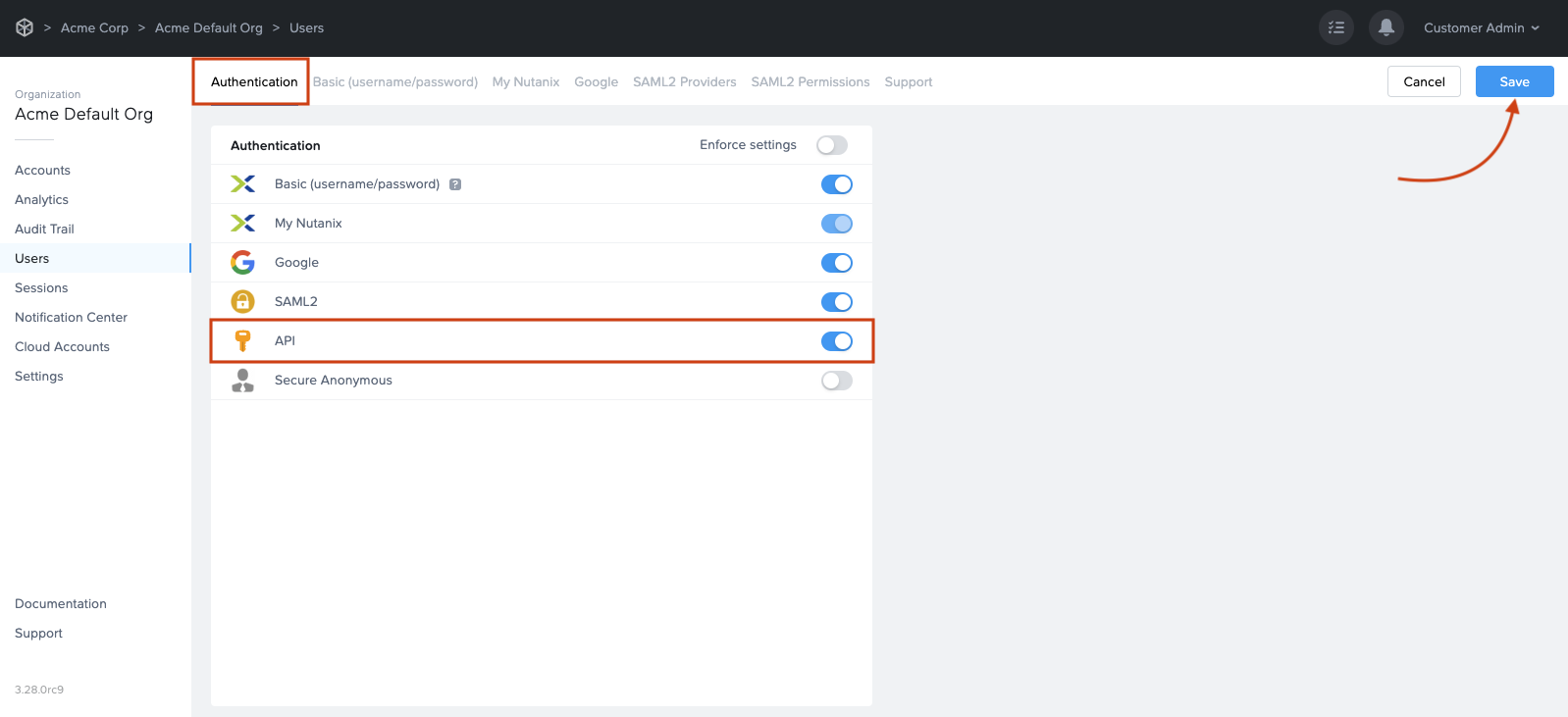Admin API
The Frame Admin API service is based on standard REST HTTPS calls. All API endpoints require signed authentication via HTTP headers and role-based access control configured within Frame Console.
The typical workflow for an API call is as follows:
-
Authenticate with the Frame REST API to sign the HTTPS API request. You'll need to create a signature with the
client_id, theclient_secret, and a timestamp. Theclient_idandclient_secretis obtained by a Frame administrator in Frame Console. -
Make the HTTPS REST call to the Admin API endpoint using the
client_id, timestamp, and the signature in the HTTP header. -
The Frame REST API verifies the signature of the HTTPS request, verifies the requestor has sufficient authorization to make the request, and will then send the requested response.
Frame Admin API is served from the following URL:
https://api.console.nutanix.com/v1
In the next section, we will review how to properly configure Frame to authenticate and authorize Frame Admin API requests.
Authentication and Authorization
All REST API calls require signed requests for authentication of each 3rd party service request. To sign an API request call, a client_id and client_secret (obtained from Frame Console by an administrator) are required for signature creation and verification.
How to Provision API Credentials
Making API Calls
In the last section, you generated a client_id and a client_secret.
The client_id is a unique string that Frame uses to identify and authorize the proper entity and API permissions.
The client_secret is an HMAC-SHA256 key used to generate the signature and is required by the signature verification process.
A signature is created by applying the HMAC-SHA256 algorithm to a string that is constructed from the client_id and a timestamp. The timestamp is the current time in seconds since epoch.
The proper steps for creating a signature are as follows:
-
Get the current timestamp.
-
Create a string by concatenating the timestamp with the
client_id(timestamp + client_id). -
Apply HMAC-SHA256 on the newly created string using the
client_secret.
In order to verify the signature, our API also requires the client_id, and the
timestamp in your request's HTTP headers. The client_secret should
NOT be included.
Python 3 Example
Below is a simple example of a Python 3 script that can be used to generate the signature needed for the API call and then the HTTPS request.
#!/bin/env python
import hashlib
import hmac
import time
import requests
# Client credentials
client_id = "<Your API Client ID goes here>"
client_secret = b"<Your API Client Secret goes here>"
# Create signature
timestamp = int(time.time())
to_sign = "%s%s" % (timestamp, client_id)
signature = hmac.new(client_secret, to_sign.encode('utf-8'), hashlib.sha256).hexdigest()
# Prepare http request headers
headers = { "X-Frame-ClientId": client_id, "X-Frame-Timestamp": str(timestamp), "X-Frame-Signature": signature }
# Make request
r = requests.get("https://api.console.nutanix.com/v1/accounts", headers=headers)
accounts = r.json()
# Print accounts
for account in accounts:
print(account)
API Endpoints
Lastly, each Frame entity (Customer, Oerganization, Account, Infrastructure) has its own set of endpoints.
<DocCardList />








